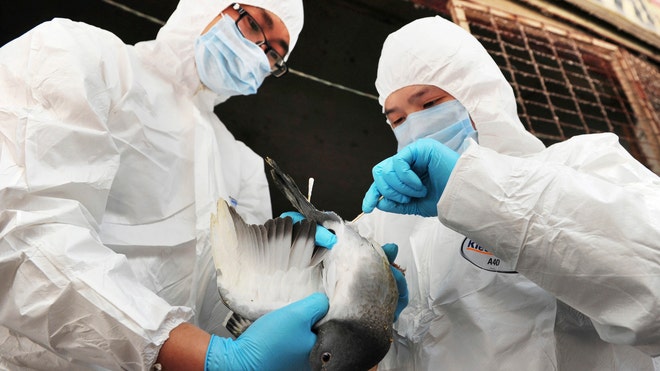
(
http://www.reuters.com)
Scientists will soon begin work on creating mutant forms of the H7N9 virus that has emerged in China. They plan on manipulating the genetic structure of the avian flu virus in order to determine what mutations it would have to undergo in order to be transmissible between humans.
The genetic modification work will result in highly contagious and lethal forms of H7N9 being made in several high security laboratories around the world, but the scientists claim it is vital to prepare for the threat of an emerging pandemic.
According to the latest World Health Organization (WHO) data, the new bird flu virus, which was only discovered last February, has already infected at least 133 people in China and Taiwan and caused 43 fatalities.
Leading virologists Ron Fouchier and Yoshihiro Kawaoka said H7N9's pandemic risk would rise "exponentially" if it gained the ability to spread easily among people. According to them, the only way to find out the chances of that happening and how many genetic changes need to occur before it does is to engineer the mutations themselves. Once they create the new virus, they plan on testing its potential using animal models.
"It's clear this H7N9 virus has some hallmarks of pandemic viruses, and it's also clear it is still missing at least one or two of the hallmarks we've seen in the pandemic viruses of the last century," Fouchier told Reuters in a telephone interview.
"So the most logical step forward is to put in those (missing) mutations first."
In 2011, after Fouchier announced that the H5N1 virus had been engineered in a lab to spread between mammals, the U.S. National Science Advisory Board was understandably alarmed. They attempted to censor the publication of the study's results in an effort to protect the public from the threat of bioterrorism. This was followed by a year long moratorium on such research, as several organizations sought ways to improve security and ensure safety controls.
To perform work on mutating the H7N9 virus, Fouchier will be working in a Bio-Safety Level 3 Enhanced lab at the highest level of biosecurity.
"Nature is the biggest threat to us, not what we do in the lab. What we do in the lab is under very intense biosecurity measures," he said. "There are layers upon layers of layers of biosafety measures such that if one layer might break there are additional layers to prevent this virus ever coming out."
Fouchier and colleagues said they hope to unravel the molecular processes behind H7N9 by manipulating its genetic material to increase virulence or induce drug resistance.
